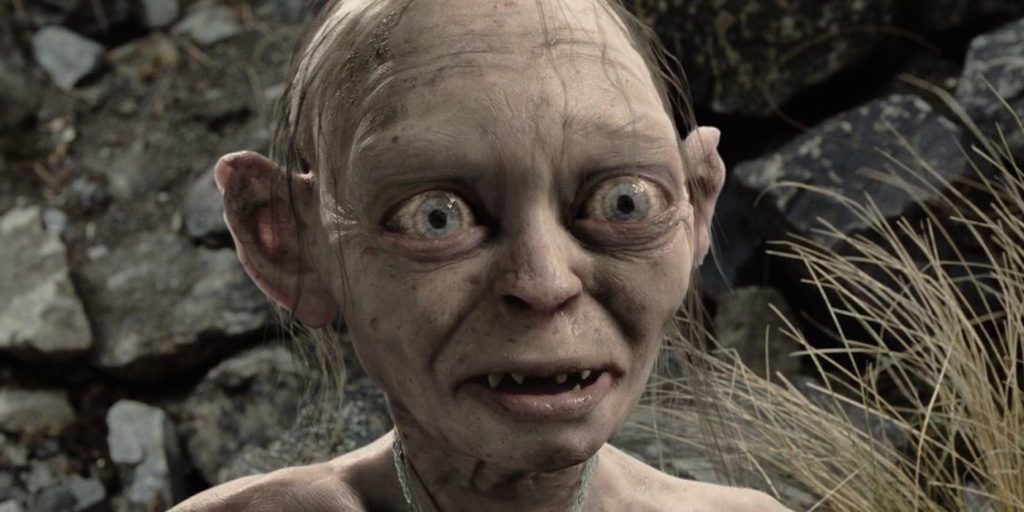In The Lord of the Rings, Gollum occasionally goes by the moniker Smeagol. The character is referred to as both Smeagol and Gollum throughout J.R.R. Tolkien’s fantasy series, with each name having a distinct meaning: one is his birth name, while the other represents the monster he became, born out of lust and tragedy.
Smeagol started out as a straightforward hobbit. While fishing with his cousin, he came across the ring in question, and the two hobbits were instantly drawn to it. For the ring, Smeagol killed his cousin, and the ring’s evil influence corrupted both his body and mind. He was changing in several ways, including making a nasty gurgling and swallowing noise that resembled the term “gollum.” His relatives and friends called him “Gollum” and made fun of him when he started to transform. The name endured. He retreated into the shadows, and in The Fellowship of the Ring from The Lord of the Rings, Gollum was discovered by the fellowship.
In The Lord of the Rings, the word Gollum is an insulting onomatopoeia. Gollum, however, is more than just a reference to the sound he makes because Tolkien was notorious for drawing on a variety of sources and styles for his naming customs. Many people think that this particular name is a tribute to Tolkien’s strong religious upbringing.
Why Smeagol Turned Into Gollum In Lord Of The Rings
One of the more popular ideas on the deeper significance of Gollum’s name is that the name is a play on the word “golem.” Hebrew was one of the numerous languages that Tolkien had studied. He was well recognised for his love of language. The idiom appears in both Jewish and Christian folklore. A golem is a supernaturally formed creature that was artificially constructed. Usually, this monster is made to serve its creator with complete blindness. It could be either a bad guy or a victim. This entire situation is evocative of Smeagol’s metamorphosis into Gollum and his actions surrounding the One Ring afterward.
Although it has never been confirmed, the name’s religious connotations make perfect sense considering Tolkien’s upbringing as a devoted Catholic. Because of his fervent beliefs, his friend and fellow novelist C.S. Lewis famously decided to become a Christian. Although Christianity isn’t explicitly mentioned in The Lord of the Rings, his faith served as a steady source of inspiration and direction for him throughout his life. It’s no accident that Gollum’s name and personality are so similar to those of a golem. The deep significance of his naming scheme only serves to highlight how pervasive Christianity is in Tolkien’s writing, even in a blockbuster film trilogy like The Lord of the Rings.
Why The Ring Changed Smeagol (But Not Bilbo)
The comparison made between Smeagol/Gollum and the two hobbits who also possess the One Ring is a crucial part of his function in the Lord of the Rings film series. Smeagol gradually develops into Gollum while wearing the Ring, although Bilbo doesn’t seem to be affected in the same way. The powerful evil contained in Sauron’s forged Ring is eventually the corrupting force that changed Smeagol. Bilbo didn’t change as much as Smeagol did, but the explanation is pretty clear: he didn’t hold the Ring for as long.
The Ring is said to have been in Smeagol’s possession for some 500 years, whereas Bilbo held the Ring for about 60 years before giving it to Frodo. Bilbo’s mind is already being affected by the Ring at that point, while Smeagol’s physical mutation was caused more by his decision to dwell alone in a cave with the Ring than by the Ring’s power. Although there is a noticeable contrast between Smeagol and Bilbo in terms of look and demeanour, if Frodo had not served as the Ring-bearer in The Lord of the Rings, their storylines would have been much more similar.



